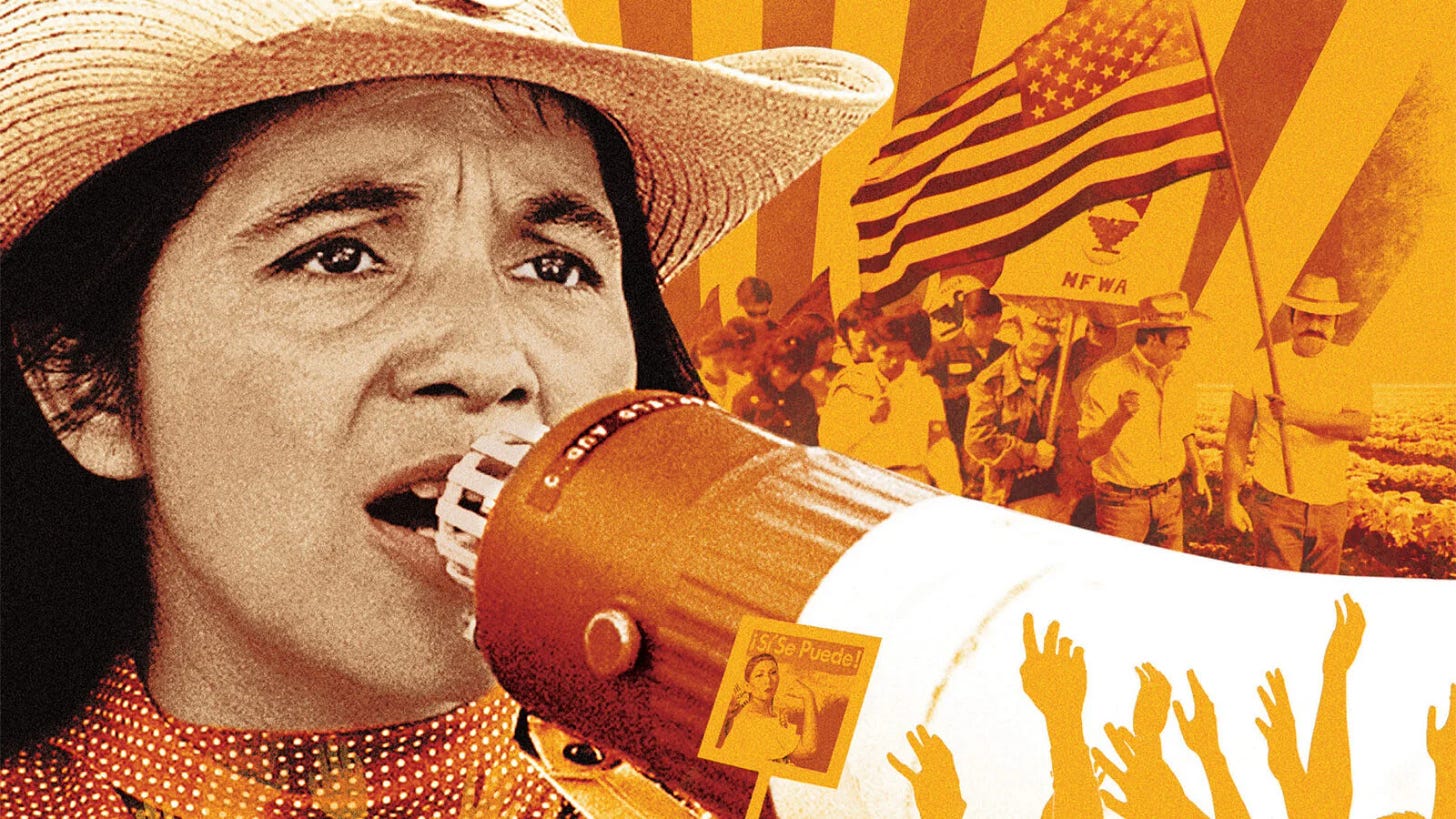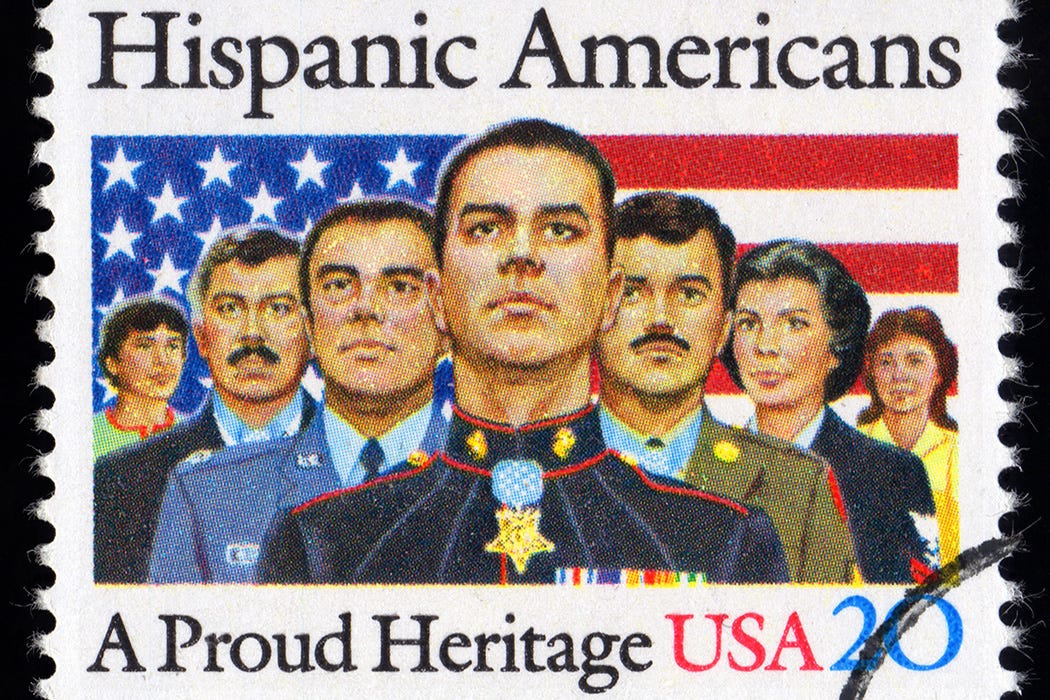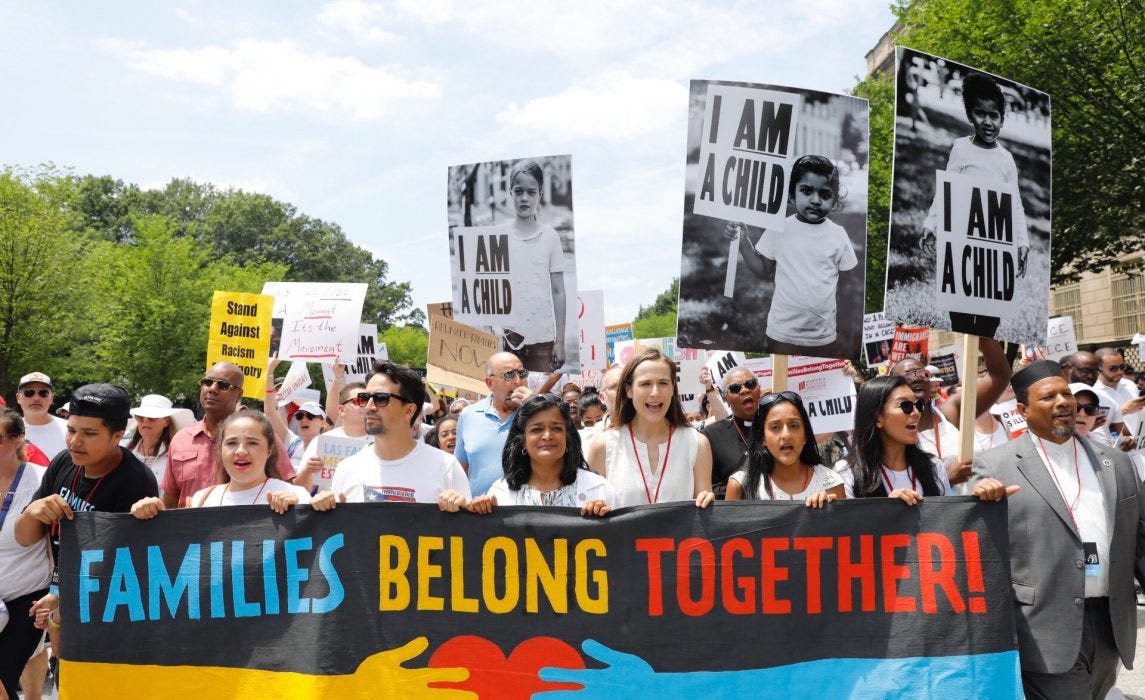A Latino History Syllabus
This is how I've taught the Latino History survey. How do you do it?
Teaching Latino history is my day job. I’ve taught this survey course about 10 times since I started working at Northwestern University. It has evolved over time and changes each year. I’m sharing my syllabus with you in case you also teach Latino history and it might be useful. And like I said, this syllabus is always changing. This version was from the last time I taught it about a year ago. If you do things differently—and probably better—I’d love to hear about your approach. Or, maybe you’re not a teacher, but are interested in learning Latino history and can use this as a reference guide. There’s so much more out there, though, so you’ll probably want to consult other sources in addition to the ones listed here. Let me know if you want suggestions about where else to look.
A couple notes: The sources that are available online are hyperlinked below. Almost all of the primary source documents come from a really useful volume put together by the historians Omar Valerio-Jiménez and Carmen Teresa Whalen, called Major Problems in Latina/o History (I looked on the Cengage website and it appears to be out of stock, but many libraries own it and other booksellers have some copies). Finally, some of the sources I’ve scanned on my own over the years—either from books in my library or my university’s. If there’s something in particular you want to see, let me know. Or, even better, buy the book it comes from!
Latino History
Course Description
The growth of the Latino population has transformed the United States and has led to heightened debates about their political power, cultural influence, citizenship, civil rights, and ethnic and racial categorization. Yet as the 2020 election demonstrated, many Americans still don’t really understand who Latinos are—or who Latinos have been, and will become.
While the increased attention to Latinos may feel “new,” Latino communities have played a pivotal role in U.S. history for centuries. In this course, we will explore the 500-year history of Latinos in the United States—and, indeed, across the Americas—from the 16th century through the early 21st century.
In its broadest sense, Latino History offers a reinterpretation of United States history that focuses on race, migration, labor, and empire. It is also the history of a community—or several communities, including Mexican Americans, Puerto Ricans, Dominican Americans, Central Americans, and Cuban Americans, and others—that represents a growing percentage of the U.S. population as a whole, and one that will increasingly influence the politics, social life, culture, and economy of the United States.
Although we will focus on the United States, we also will examine the movement of Latino peoples within and between the United States, Latin America, and the Caribbean. We will use a variety of media, including literature, film, and music, as well as more traditional historical interpretations. Ultimately, you will gain a deeper understanding of the issues and histories that bring Latinos together, those that continue to divide them, their multiple and shifting racial classification, and the long struggles for equality and belonging that have animated their histories.
Learning Objectives
To develop a working understanding of Latino History and its broad themes, in order to understand how Latinos have shaped, are shaping, and will continue to shape the past, present, and future of the United States.
To develop historical skills (including critical engagement, facility at formal writing, expressing ideas verbally, defending or deconstructing an argument by using evidence from the past) that will benefit students in any later career.
To understand how Latino History fits within the broader field of Latino Studies, and how historians of Latino populations in the United States may or may not approach their subjects in ways that are both similar and different compared with other Latino Studies scholars.
To learn creative and interdisciplinary approaches to historical thinking.
To value and participate in a learning community, and to demonstrate immersion in a culture of scholarship.
Assignments
Midterm Essay 1 (20%): Based on what you’ve learned about the Spanish colonial period of American history, should we consider the centuries from, say, 1500 to 1800, as the origin of Latino history? Do you see historical themes from this period that resonate with how you understand the Latino community today, or is it so distant as to be unrecognizable as Latino history?
Midterm Essay 2: The 2020 election caused a great deal of confusion about who Latinos are, where (or in which regions or states) Latinos matter, what they care about, etc. Based on your reading of a handful of post-election analyses, and your understanding of the history you’ve learned so far in this class, what are the things that Americans still need to learn about Latinos between now and the next election in order to better understand them, and what are the things reporters and other analysts got right this time?
Final Project: In the final weeks of 2020, Congress passed legislation (though not unanimously) that paves the way for the Smithsonian National Museum of the American Latino, in Washington, D.C. For your final project, you will begin to answer this question: what are the histories that will need to be displayed and narrated in the new museum? You will design one exhibition, and write a 5-page paper explaining both your design for the exhibition, and the history of the person, event, period on display.
Schedule
Session 1: Who, or what, is a Latina/o Anyway?
Assignments
“Who is Hispanic?” Pew Research Center (Online here)
Isvett Verde, “Some Latinos Voted for Trump. Get Over It.” The New York Times, November 5, 2020 (Online here)
Session 2: Spanish America
Assignments
“Letter of Christopher Columbus on His First Voyage to America, 1492”
“La Malinche: The Story of Mexico’s Eve,” on LatinoUSA, December 26, 2014 (Online here)
The Narrative of Cabeza de Vaca (Online here)
Session 3: Youth and Gold
Assignments
Fray Marcos de Niza’s “Relación,” 1539 (Online here)
Coronado’s Report to the King of Spain, October 20, 1541 (Online here)
Letter of Hernando de Soto (1539), and memoir of Hernando de Escalante Fontaneda (1575)
Session 4: The Sacred and the Secular
Assignments
King Philip of Spain’s “Ordinances for the discovery, the population and the pacification of the Indies,” 1573
Letter of the Governor Don Antonio de Otermín, 1680 (Online here)
Declaration of Pedro Naranjo of the Queres Nation, 1681 (Online here)
Junipero Serra and the California Missions (YouTube)
Junipero Serra Statue in LA Comes down (YouTube)
Bishop Barron on Canceling Padre Serra (YouTube)
Session 5: Freedom and Independence
Assignments
José Álvarez de Toledo, Philadelphia Manifesto, 1811
Nicolás Kanellos, “José Álvarez de Toledo y Dubois and the Origins of Hispanic Publishing in the Early American Republic,” Early American Literature, Volume 43, Number 1 (2008), pp. 83-100
Session 6: Looking North
Assignment
Lorenzo de Zavala, Journey to the United States of North America
Session 7: The Texas Revolution
Assignments
Documents related to the Texas Revolution
Film: Latino Americans, “Foreigners in Their Own Land” (Episode 1) (This and all other episodes can be found online: http://www.pbs.org/latino-americans/en/)
Session 8: War of Conquest
Assignment
Documents related to the U.S.-Mexico War
Session 9: A Conquered People?
Assignment
María Amparo Ruiz de Burton, The Squatter and the Don (1885)
Session 10: War and Revolution: the Spanish American War and the Mexican Revolution
Assignments
José Martí, “A Vindication of Cuba,” “My Race,” and “Our America”
Documents related to the Spanish American War
Ernesto Galarza, “North from Mexico,” in Barrio Boy
Session 11: Exiles and Immigrants: U.S. interventions in Latin America and the formation of Latino communities in the United States
Assignments
“Early Pan-Latino Communities”
“Labor Recruitment and Community Formation in the World War I Era”
Film: Latino Americans, “Empire of Dreams” (Episode 2)
Session 12: A New American Race: assimilation, assimilability, and loyalty to Latin American homelands during the 1920s
Assignments
José Vasconcelos, “The Cosmic Race”
José Fernández Díaz, “Guantanamera”
Américo Paredes, “The Hammon and the Beans”
Session 13: New Americans, New Politics: intellectuals, politicians, lawyers, and vigilantes define Latinos—and other—migrants
Assignments
Natalia Molina, “‘What Is a White Man?’: The Quest to Make Mexicans Ineligible for U.S. Citizenship,” in How Race is Made in America
Sam Erman, “Defining a Limited and Ambiguous Citizenship for Puerto Ricans,” in Major Problems in Latina/o History
Monica Muñoz Martínez, “Recuperating Histories of Violence in the Americas: Vernacular History-Making on the US-Mexico Border,” American Quarterly
Session 14: The Depths of Depression: financial crisis, anti-Latino discrimination, and deportation
Assignments
Carey McWilliams, “Getting Rid of the Mexican”
“Puerto Rican Activist Bernardo Vega Recalls the Harlem Riot”
“Piri Thomas, a Writer of Cuban and Puerto Rican Descent, Depicts the Great Depression in Harlem, 1941”
Film: Los Repatriados (2001)
Session 15: World War: Race, Labor, Service, and the sting of discrimination during the 1940s
Assignments
“Race, Gender, and Continuing Migration in the World War II Era”
Leonard Nadel Collection of Bracero Photographs
Film: Latino Americans, “War and Peace”
Session 16: The Cold War Abroad: U.S.-Latin American Relations After World War II
Assignments
Luis Muñoz Marin, “An America to Serve the World” (1956)
Selections from The Cuba Reader: History, Culture, Politics
U.S. Government Provides Assistance for Cuban Refugees, 1961
Scholar María de los Angeles Torres Recalls Her Experiences with Operation Pedro Pan, 1961
U.S. Government Assists “Cuba’s Children in Exile,” 1967
U.S. State Department Outlines Program in the Dominican Republican, 1962
Dominicans Settle in New York City, 1971
Film: Latino Americans, “The New Latinos” (Episode 4)
Session 17: The Cold War at Home: business, the repression of organized labor, and the effects of red-baiting on Latinx communities during the 1950s
Assignments
Film: Salt of the Earth (1954)
“The Defense of Lolita Lebron: An Interview with Conrad Lynn” (Online here)
“Remembering Puerto Rican Activist Lolita Lebron” (Online here)
“What happened to Lolita Lebrón in 1954 and not insurrectionists on Jan. 6,” Al Día, January 7, 2021 (Online here)
Session 18: Latino Civil Rights: Brown Power and Anti-colonialism during the 1960s and 1970s
Assignments
Ruben Salazar, “Who Is a Chicano? And What Is It the Chicanos Want?” and “Chicanos vs. Traditionalists”
Pablo “Yoruba” Guzmán, “Before People Called me a S***, They Called Me a N***,” in the Afro-Latin@Reader
Alurista, “El Plan Espiritual de Aztlán” (1967)
“Chicanas Assert a ‘Revolution within a Revolution”
“Speech Given by Dolores Huerta, UCLA, February 22, 1978,” in A Dolores Huerta Reader
“Cuban Youth Promote Dialogue with Cuba,” and “Writer Achy Obejas Describes Generational Conflicts in the Cuban Community”
Film: Palante, Siempre Palante! The Young Lords (1996)
Film: Latino Americans, “Pride and Prejudice” (Episode 5)
Session 19: Hot Commodities: the business of Latinidad
Assignments
Arlene Dávila, Latino Spin, “The Hispanic Consumer” & “The ‘Disciplining’ of Ethnic Studies,” Latino Spin
G. Cristina Mora, “Broadcasting Panethnicity: Univision and the Rise of Hispanic Television,” in Making Hispanics
Session 20: The Sleeping Giant
Assignments
“It’s Your Turn in the Sun,” Time, October 16, 1978
Benjamin Fernandez interview, November 10, 1978 (Online here)
Teresa Cordova, “Harold Washington and the Rise of Latino Electoral Politics in Chicago, 1982-1987,” in Chicano Politics and Society in the Late Twentieth Century
Frank del Olmo, “Latino ‘Decade’ Moves Into ‘90s,” Los Angeles Times, December 4, 1989 (Online here)
Session 21: Immigrants’ Rights: militarizing the border, defending immigrants, and immigration reform
Assignments
Jimmy Patiño, “Who’s the Illegal Alien, Pilgrim?” and “Abolishment of the INS/Border Patrol,” Raza Si, Migra No!
Ana Minian, “A Law to Curtail Undocumented Migration” & “The Cage of Gold,” in Undocumented Lives
Film: Born in East L.A. (1987)
Session 22: Refuge and Vigilantism: Civil Wars in Central America, the Sanctuary Movement, and new waves of Cuban migration in the 1980s
Assignments
“Testimony of a Salvadoran Refugee”
“The 1980s: U.S. Intervention and Central American Immigration”
“From Golden Exiles to ‘Bad Press’ for Cubans, 1980”
“Writer Reinaldo Arenas on Being Cuban and Gay, 1980”
“Journalist Mirta Ojito Explores the Relationships Between Afro-Cubans and White Cubans, 2000”
Film: Sanctuary (1983)
Film: Made in L.A. (2007)
Session 23: The Latino Threat
Assignments
Leo Chavez, “The Latino Threat Narrative,” in The Latino Threat
“Continuing Immigration Debates”
Session 24: Latinizing America, Americanizing Latin America: multiculturalism, culture wars, and the reconquista of the Southwest
Assignments
Jorge Ramos, “The Invader Invaded,” in The Latino Wave
Film: Latino Americans, “Peril and Promise” (Episode 6)
Film: The Sixth Section (2004)
Session 25: The Emerging Majority?
Assignments
Julie Weise, “Skyscrapers and Chicken Plants: Mexicans, Latinos, and Exurban Immigration Politics in Greater Charlotte, 1990-2012,” in Corazón de Dixie
Richard Alba, “The Likely Persistence of a White Majority,” The American Prospect, January 2016 (Online here)
G. Cristina Mora & Michael Rodriguez-Muñiz, “A Response to Richard Alba’s ‘The Likely Persistence of a White Majority,” New Labor Forum, April 2017 (Online here)
Session 26: The Latino Future
Assignments
Paula Ramos, Finding Latinx
Carina del Valle Schorske, “The World According to Bad Bunny,” The New York Times Magazine, October 11, 2020 (Online here)










I never taught history, but when teaching Latin American literature I did a similar country/time span break down. Gracias por compartir!
Observo que sus lecturas de la historia puertorriqueña están sesgadas a favor de su interpretación nacionalista-independentista. El hecho de que la inmensa mayoría favorece la continua relación política con los Estados Unidos - sea como Estado o como Territorio - pensaría uno que las lecturas pudieran reflejar esa realidad con mayor imparcialidad. Añado, hay que actualizar las lecturas para recoger a nuevos autores.
Adelante con el buen trabajo.
Andrés L. Córdova, MInima Juridicae